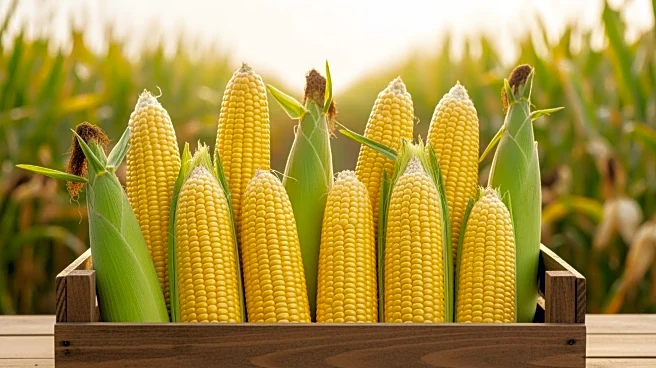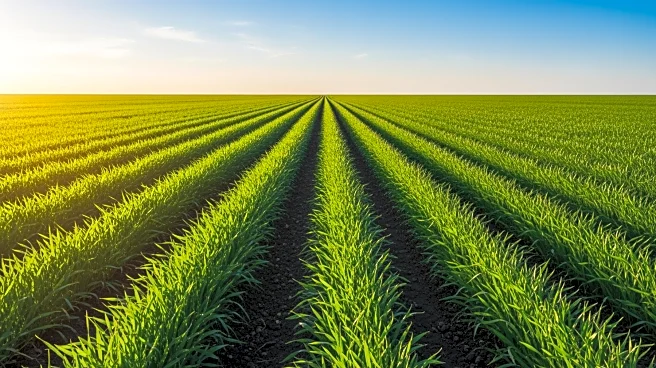What's Happening?
Kraft Heinz, a major player in the food processing industry, is experiencing increased production costs due to volatility in agricultural commodity markets. This volatility is largely driven by climate
change, which has led to extreme weather events affecting crop yields and livestock production. As a result, companies like Kraft Heinz, which rely on stable supplies of grains, meats, and other agricultural products, are facing higher input costs. These increased costs can squeeze profit margins or force companies to raise consumer prices, potentially impacting demand and market share.
Why It's Important?
The volatility in agricultural commodity markets poses significant challenges for food processing companies, impacting their profitability and pricing strategies. As climate change continues to affect agricultural production, companies that rely heavily on agricultural inputs may face ongoing financial pressures. This situation highlights the need for these companies to adapt by diversifying their supply chains and investing in climate-resilient agricultural practices. The broader impact on consumers could be higher food prices, affecting household budgets and potentially leading to changes in consumer behavior.
What's Next?
As climate change continues to impact agricultural production, companies like Kraft Heinz may need to explore alternative sourcing strategies and invest in technologies that enhance supply chain resilience. Policymakers and industry leaders may also need to collaborate on developing strategies to mitigate the effects of climate change on agriculture, ensuring food security and stability in commodity markets. The ongoing situation underscores the importance of addressing climate change as a critical factor in economic planning and policy development.
Beyond the Headlines
The challenges faced by Kraft Heinz and similar companies highlight the interconnectedness of environmental and economic systems. The concept of 'climateflation'—inflation driven by climate-related factors—may become a more prominent feature of the global economy, requiring businesses and governments to adapt to a new reality of increased volatility and uncertainty in agricultural markets.











